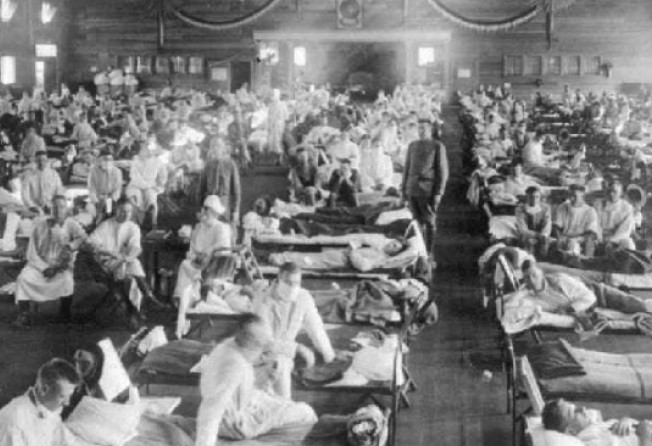War on flu: learning from the deadly epidemics of the past
History of deadly 1918 pandemic confirms that pandemics are more often man-made than natural

On the morning of this day, March 11, in the year 1918, more than 100 US soldiers stationed at Fort Riley, Kansas, reported sick to the infirmary. Their symptoms were flu-like but much more severe. The number quintupled within a week. Several dozen died before the month was over, caused by a new breed of influenza virus.
Within a year, more than a quarter of the US population came down with the flu, and more than half a million died. That same year, the virus spread across the globe, fuelled by the mass movement of soldiers to fight in the final months of the first world war.
An estimated 50 million people died of flu worldwide – more than twice the number of soldiers and civilians killed in the four years of the war. It was the worst pandemic ever recorded.
Though the strain was first registered in the US, it was labelled the “Spanish flu”. The reason was that when the virus rampaged the trenches on the Western Front in Europe, news of the outbreak and its high mortality rate was censored to avoid exacerbating the already low morale in the battlefield.
In war-neutral Spain, however, reporting on the epidemic was unhindered. The public impression then was that Spain had been particularly hard-hit, hence the label.
The mortality rate of the 1918 Spanish flu was much higher than that of the usual strains. Later research confirmed the flu had been particularly deadly due to war-related circumstances.
In normal influenza outbreaks, seriously infected patients stay home while milder cases continue to work. Natural selection thus favours the spread of the mild strain of the virus.
On the battlefields of the first world war, however, the reverse happened: soldiers with mild symptoms stayed in the trenches while the more seriously affected were moved out in packed trains and into crowded field hospitals. A mutated, more deadly version of the virus spread fast and wide.
Censorship of the outbreak also accelerated the infection as soldiers and even field medics were unaware of its seriousness and failed to take precautionary measures.
The deadly history of the 1918 pandemic confirms what we have learned time and again, in training courses and through real-life experience: that catastrophes are more often man-made than purely natural.
When Hong Kong was hit by Severe Acute Respiratory Syndrome in 2003, the initial public reaction was one of panic. But we soon managed to stabilise emotions and keep the Sars epidemic under control.
Full transparency in disseminating the most up-to-date information accounted for much of the success. It secured public confidence and engaged people to coordinate their responsiveness to contain the epidemic.
In an age when globalisation of economic and leisure activities brings the risk of infectious diseases to new heights, governments and health authorities must take heed of the lessons learned from 1918 and 2003.
Lam Woon-kwong is convenor of the Executive Council